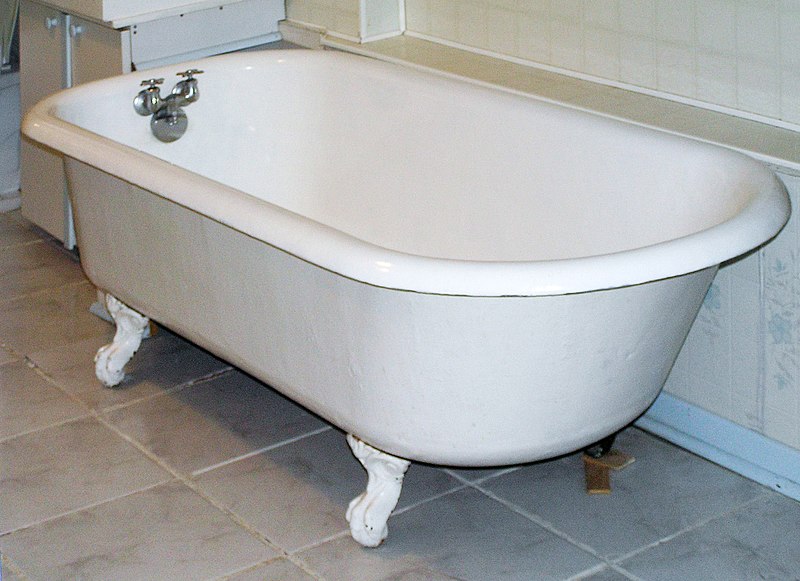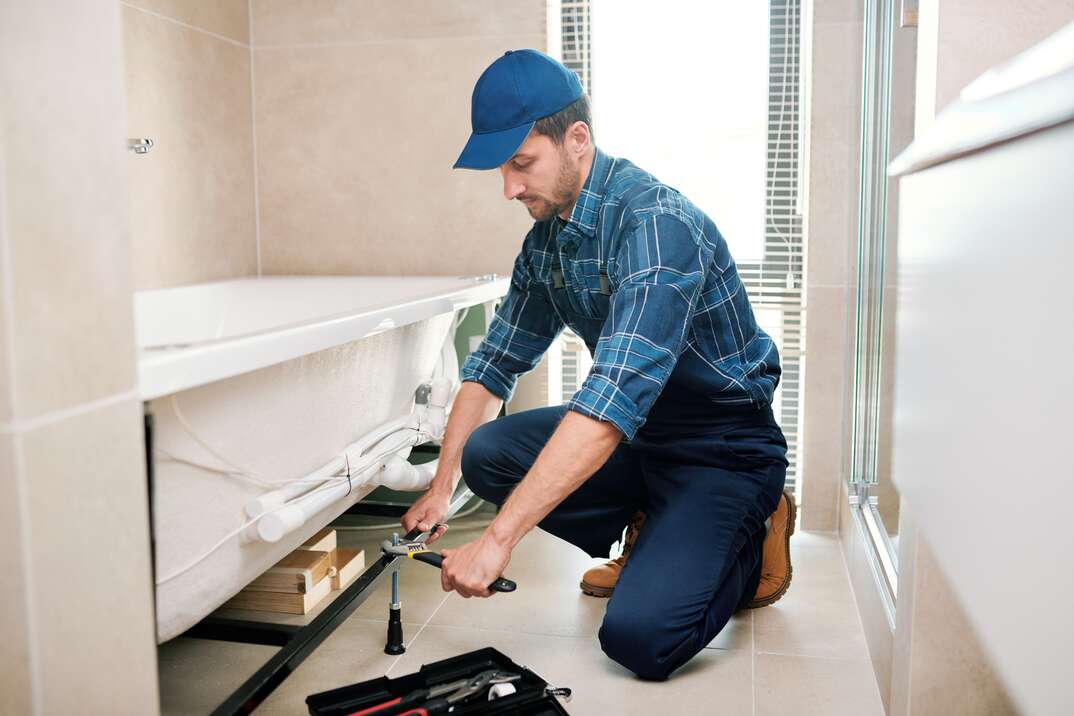We have unearthed this article involving A Step-by-Step Guide to Installing a Bathtub below on the net and reckoned it made sense to discuss it with you on my blog.

Mounting a bathtub isn't precisely brain surgery, but it does need strong plumbing, woodworking, and in some cases, tiling abilities. Changing an old bath tub with a brand-new one is also a reasonably hard task. If the old tub is easily available, the job can relocate easily; if you need to open up a wall to get rid of the old bathtub and position the new tub, the job is a lot harder. In either instance, the project is within a home handyman's skills, although you will require an assistant to vacate the old bathtub and also embeded in the brand-new one. Make sure you have qualified yourself for the task as well as fit trying it. Rather than employing a professional to take control of a halfway-completed job, it is far better to take into consideration using one prior to you start. Opportunities are you might require a specialist plumber to make tube links.
This write-up will assist you set up a new tub in your restroom if you have already purchased a new tub and don't need to alter the setup of your previous water supply pipes.
Your tools and material checklist should consist of the following:
Getting ready for the Installation
To start with, the sustaining frame provided with the bathroom must be fitted (if needed) according to the producer's instructions. Next off, fit the taps or mixer to the bathtub. When fitting the faucet block, it is very important to make certain that if the tap features a plastic washing machine, it is fitted in between the bath and the taps. On a plastic bath, it is additionally reasonable to fit a supporting plate under the taps device to stop stress on the bathtub.
Fit the adaptable faucet ports to the bottom of the two faucets utilizing 2 nuts and olives (occasionally provided with the tub). Fit the plug-hole electrical outlet by smearing mastic filler round the sink electrical outlet hole, and then pass the electrical outlet with the hole in the bath. Make use of the nut supplied by the maker to fit the plug-hole. Analyze the plug-hole electrical outlet for an inlet on the side for the overflow pipe.
Next, fit the end of the adaptable overflow pipe to the overflow electrical outlet. Afterwards, screw the pipe to the overflow face which need to be fitted inside the bath. Make sure you utilize all of the provided washers.
Attach the trap to the bottom of the waste electrical outlet on the tub by winding the string of the waste electrical outlet with silicone mastic or PTFE tape, and screw on the catch to the outlet. Attach the bottom of the overflow tube in a similar manner.The bathroom ought to currently be ready to be fitted in its last setting.
Removing Old Taps
If you require to replace old faucets with brand-new ones as a part of your setup, after that the first thing you must do is disconnect the water system. After doing so, turn on the faucets to drain any type of water remaining in the system. The process of getting rid of the existing taps can be fairly problematic as a result of the limited access that is commonly the case.
Make use of a container wrench (crowsfoot spanner) or a faucet tool to reverse the nut that connects the supply pipes to the faucets. Have a cloth all set for the remaining water that will originate from the pipes. When the supply pipelines have been gotten rid of, use the exact same device to loosen the nut that holds the taps onto the bath/basin. You will certainly need to stop the solitary taps from turning throughout this process. When the faucets have actually been removed, the holes in the bath/basin will certainly need to be cleaned of any type of old securing compound.
Before carrying on to fit the brand-new faucets, compare the pipe links on the old faucets to the new taps. If the old taps are longer than the new faucets, then a shank adapter is required for the brand-new taps to fit.
Setting up the Tub
Making use of the two wooden boards under its feet, put the bath tub in the required position. The wooden boards are practical in equally spreading the weight of the tub over the location of the boards as opposed to concentrating all the weight onto four small factors.
The following goal is to ensure that the bath tub is leveled all round. This can be attained by checking the spirit level as well as changing the feet on the bath tub till the level reads level.
To install taps, fit the bottom of the furthest versatile faucet adapter to the ideal supply pipeline by making a compression sign up with; after that do the very same for the various other faucet.
Turn on the supply of water as well as inspect all joints as well as new pipework for leakages as well as tighten them if needed. Load the bath tub as well as additionally examine the overflow electrical outlet and also the regular electrical outlet for leakages.
Ultimately, deal with the bathroom paneling as defined in the supplier's user's manual. Tiling and also securing around the bath tub must wait up until the bathtub has actually been utilized a minimum of once as this will settle it into its final placement.
Suitable New Touches
If the tails of the brand-new faucets are plastic, then you will need a plastic connector to prevent damages to the string. One end of the adapter fits on the plastic tail of the tap and the various other end gives a link to the existing supply pipes.
If you need to fit a monobloc, after that you will require lowering couplers, which attaches the 10mm pipeline of the monobloc to the common 15mm supply pipe.
Next, place the faucet in the installing hole in the bath/basin ensuring that the washing machines remain in place between the faucet as well as the sink. Protect the tap in position with the supplier supplied backnut. When the faucet is firmly in position, the supply pipes can be connected to the tails of the faucets. The faucets can either be connected by utilizing corrugated copper piping or with regular tap connectors. The previous kind should be attached to the faucet ends initially, tightening up only by hand. The supply pipelines can later on be connected to the other end. Tighten up both ends with a spanner after both ends have been attached.
Tiling Around the Tub
In the area where the bathroom fulfills the tile, it is needed to seal the accompanies a silicone rubber caulking. This is very important as the fitting can relocate enough to crack an inflexible seal, causing the water to pass through the wall between the bathroom and the tiling, bring about issues with dampness as well as possible leakages to the ceiling below.
You can pick from a range of coloured sealers to assimilate your fixtures and also fittings. They are offered in tubes and cartridges, as well as are capable of securing gaps as much as a width of 3mm (1/8 inch). If you have a bigger gap to fill up, you can fill it with spins of soaked newspaper or soft rope. Bear in mind to always load the tub with water prior to sealing, to permit the movement experienced when the bathtub is in use. The sealer can fracture fairly very early if you do not think about this movement before securing.
Alternatively, ceramic coving or quadrant ceramic tiles can be made use of to edge the bathroom or shower tray. Plastic strips of coving, which are easy to use and reduce to dimension, are likewise conveniently available on the marketplace. It is recommended to fit the floor tiles using water-resistant or water-proof adhesive and also grout.
Bathtub Installation
How Important Is A Bathtub To Your Home?
High-quality baths, showers, and other bathroom updates are necessary when considering a smart investment in your home. It’s a room that you go to every day and one that is constantly being used by guests.The bathroom is one of the top trafficked rooms in a home and also one of the most valuable in terms of home resale.
Install Piping Before Tub
You will be using your existing drain and waste vent system, but pipes required include the hot and cold water supply lines and a pipe leading to a shower head. A mixing valve and shower head are also needed. Air chambers may be required.
Position the Tub
Lower the tub into place so that the continuous flange fits against the wall studs and rests on 1’x4' or 2’x4' supports. Anchor the tub to the enclosure with nails or screws inserted through the flanges into the studs.
NOTE: Remember, bathtubs and shower stalls may require support framing. A bathtub filled with water is extremely heavy, so check building codes and framing support before installing the tub.
Assemble Drain Connections
Assemble the bathtub drain connections by connecting the tub overflow with the tub drain above the trap, not beyond it. The trap will have a compression fitting that screws over the arm of the overflow assembly.
Place a Pipe For the Shower Head
First, locate a brass female threaded winged fitting and attach it to a framing support via a screw or a nail. Then run a pipe up the wall for the shower head. Sweat or solder the other side of the brass fitting to the top of the pipe.
Attaching Hot and Cold Water Lines
Attach your water lines for both hot and cold by sweating these directly into the hot and cold ports of the mixing valve. The mixing valve will be how water enters the tub’s system, not by the pipes themselves.
Install the Spout
Extend a piece of 1/2 inch pipe, or whichever length is specified in the manufacturer’s instructions, for the tub spout. Sweat on a male threaded fitting at the end of the pipe or use a brass nipple of the proper length and a 1/2 inch cap.
NOTE: At this point you should have your rough-in plumbing work inspected before proceeding further.
Check For Leaks
Restore the water pressure and check the drain connection and the supply pipes for any sign of leaking.
estore the Bathroom Wall
Replace the wall with moisture-resistant drywall as a base for your wall covering. Seal the joints between the wall and your new tub with silicone caulk as protection against water seepage.
https://www.berkeys.com/2016/12/02/bathtub-installation-dallas/

I recently found that blog posting about Installing A Bathtub while exploring the search engines. Are you aware of another person who is sincerely interested in How to Install a Bathtub: Install an Acrylic Tub and Tub Surround? Please feel free to promote it. Kudos for your time. Please check up our site back soon.
This Resource